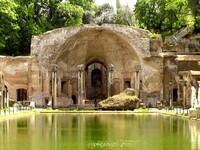- England
- Scotland
- France
- Holland
- Germany
- Italy
- Spain
- Portugal
- USA
- China
- Japan
- India
- Iran
- Advice
- Gardens
- England
- Scotland
- France
- Holland
- Germany
- Italy
- Spain
- Portugal
- USA
- China
- Japan
- India
- Iran
- Advice
- Garden Tours
Book: Landscape Planning and Environmental Impact Design: from EIA to EID
Chapter: Chapter 3 Context sensitive design theory
An early eighteenth century theory, that buildings and planting should respond to the Genius of the Place, created a still-influential theory of context. Roman civilisation was superstitious and Pre-Christian Rome was polytheist. When the legions established a far-flung imperial outpost they chose to placate any local gods they encountered. If none could be found, tribute was paid to the genius loci or Genius of the Place. Alexander Pope took up this idea in the early eighteenth century and transformed it into the most influential theory of context which has ever been penned: To build, to plant, whatever you intend, To rear the Column, or the Arch to bend, To swell the Terras, or to sink the Grot; In all, let Nature never be forgot. Consult the Genius of the Place in all That tells the waters or to rise, or fall.... Joins willing woods, and varies shades from shades Now Breaks, or now directs, th'intending Lines; Paints as you plant, and as you work, Designs. This theory is encapsulated in the eternal advice to 'consult the genius of the place'. The modern interpretation of the theory is that projects should 'fit in' with their context by using local styles and materials. Hough, inspired by Geddes, has written of a 'regional imperative' (Hough, 1990). Many people, who like to see Japanese architecture in Japan and Portuguese architecture in Portugal , are sad when they see local traditions being overwhelmed by rootless international styles. This leads conservationists and others to call for the Genius of the Place to be consulted. I am pleased to support this call. She must be consulted, always. She need not be obeyed, always. I suspect she does not favour Eucalyptus forests with stainless steel churches in the more beautiful environs of European capitals.
